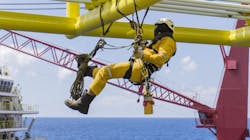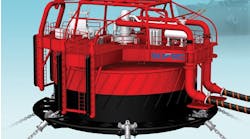Editor's note: This article first appeared in the 2023 Executive Perspectives Special Report, which published within the November/December 2023 issue of Offshore magazine.
By Katie Mehnert, ALLY Energy
The challenges of recruiting an offshore oil and gas workforce are about to grow exponentially. Not only are oil and gas demands continuing to grow, but new investments into offshore wind are transformative as well. The US administration has set a goal of deploying 30 GW of offshore wind electricity generation by 2030, creating thousands of new jobs. This will mean new competition within the offshore sector. More than ever, offshore oil and gas companies will need to come up with ways to attract and retain talent.
Creating the energy workforce of the future requires a whole new strategy. The next generation of workers have different expectations, and they seek different things from work. And they have a lot of opportunities in a tight job market.
This is why in our work with energy companies, I tell clients that it’s time to “flip the script.” In hiring and recruiting, don’t start with what you’re looking for. Instead, start with what the great, talented people out there are looking for. In short, ask: What do people want? Here are some of the answers.
More balanced lives
Offshore work is notoriously grueling. It also often requires being far away from family and friends for weeks at a time. Traditionally, this has understandably been seen as necessary. But now workers are increasingly prioritizing life outside of work. It is important to experiment with new possibilities, like shorter shifts, different schedules and more opportunities to connect with family and friends. Don’t assume that providing these things is “impossible.” The same ingenuity and creativity that we use to power the world can also be used to empower the workforce with new possibilities.
Tackle the DEI challenge
Oil rig roughneck jobs remain 95% male, according to Zippia. This is not only a problem for its lack of gender diversity, it is also simply unsustainable. Attracting the future workforce means making everyone feel welcome, in all kinds of jobs. Offering new, flexible options is part of what it will take to fix this.
As the Nobel Prize-winning labor economist Claudia Goldin explains, business leaders also need to build organizational cultures that support everyone who has caregiving and domestic responsibilities outside of work. They need to reach out to people of all backgrounds, make them feel welcome and ensure they have equal opportunities. It’s time to make "representation matters” not just a slogan but an irrefutable reality.
Skills training
Traditionally, the boom and bust cycle has left workers being laid off all too often. It’s time to change that paradigm. When fewer workers are needed for offshore operations, don’t let them go. Instead, keep them on the payroll and have them do skills training. Upskilling and reskilling the energy workforce is essential. It’s also one of the most important things that today’s top talent seeks.
Take the long view
One thing unlikely to change is that a lot of offshore work is more suitable for younger people who don’t have children to take care of. So business leaders need to assess what they are doing to attract the workers of tomorrow who may want to take on offshore jobs in their late teens or 20s.
Investing in STEAM (science, technology, engineering, arts and math) education in schools is part of the answer to develop a talent pipeline, and so is making sure that children learn about the exciting, rewarding opportunities of working in offshore jobs. Engage with schools, including at the elementary level. Plant the seeds of excitement for offshore work early on.




